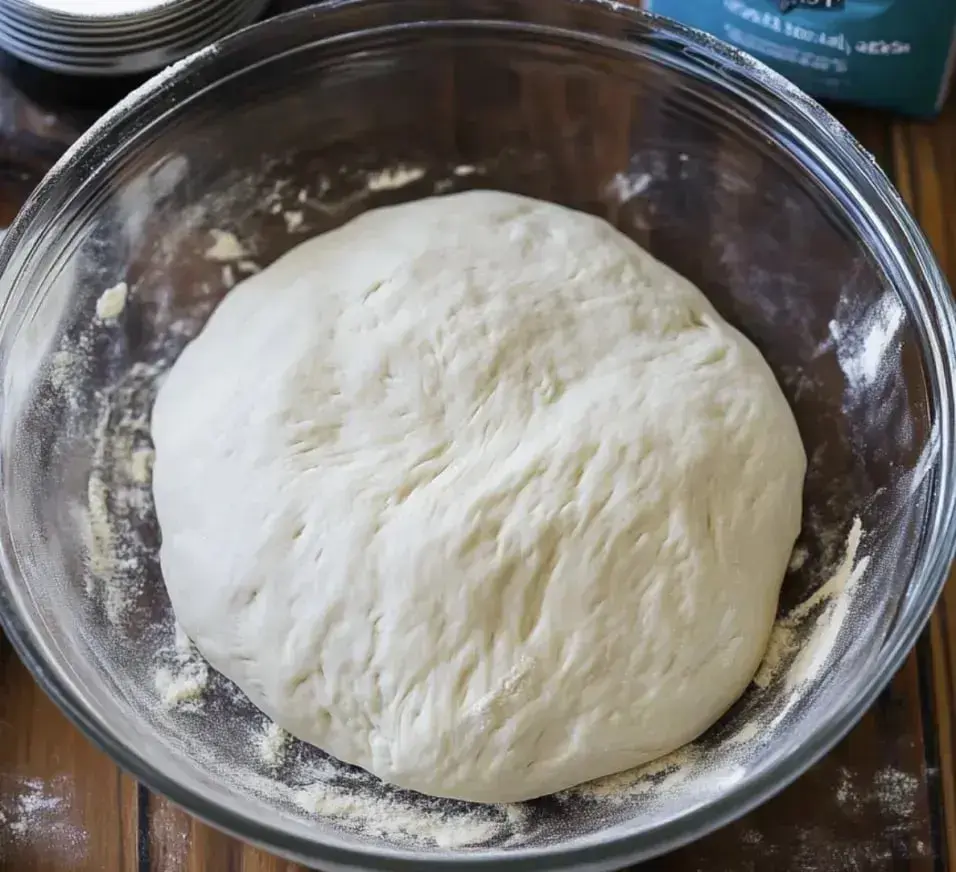 Pin it
Pin it
Want a pizza dough that's super easy to make? You're gonna love this! We've created a straightforward homemade dough that makes pizza night totally stress-free. Never tried working with yeast before? No problem! We'll guide you through each step so your homemade creation turns out amazing the very first time.
What Makes This Dough So Good
The beauty of this fantastic pizza base? It's incredibly uncomplicated. You won't need any special tools or weird ingredients - just follow our clear directions for perfect results every time. This versatile dough works great whether you prefer your crust paper-thin and crunchy or thick and chewy.
Your Ingredients List
- Flour: 2 1/2 cups all-purpose or bread flour - your pick affects the texture
- Yeast: 1 packet (2 1/4 teaspoons) instant - the key ingredient that makes everything rise
- Sugar: 1 1/2 teaspoons - gives the yeast something to munch on
- Salt: 3/4 teaspoon - enhances everything else
- Warm Water: 3/4 cup - aim for lukewarm, not scalding
- Olive Oil: 2 tablespoons, with extra for coating the bowl
- Optional Seasonings: Add garlic powder or dried herbs if you want to jazz it up
Simple Preparation Steps
- Start The Base
- Mix 1 cup of flour in a large bowl with the yeast, sugar, and salt. Pour in the warm water and olive oil, then mix until it looks smooth like cake batter.
- Form The Dough
- Mix in another cup of flour until combined. When it gets clumpy, flour your hands and start kneading. Add more flour if it sticks too much - you want it pliable but not sticky.
- Give It Time
- Coat a clean bowl with oil, place your dough ball inside, and cover it up. Put it somewhere warm for about 30 minutes until it grows substantially.
- Work It Again
- After it's doubled, push it down (so satisfying!) and knead briefly. Now you can start shaping it into your pizza base.
- Prep For Toppings
- Spread the dough on your pan, create a raised edge for the crust, and poke all over with a fork to stop air bubbles.
- Finish And Cook
- Add whatever toppings you love and bake at 425°F. In around 15 minutes, you'll have an awesome homemade pizza!
Flour Selection Tips
Want that authentic pizza joint texture? It's all about which flour you grab. Go for bread flour if you want that stretchy, foldable New York-style slice. All-purpose gives you a more tender bite. Either way, your homemade creation will blow away any store-bought frozen option.
Flavor Boosters
Take your dough to the next level by throwing in some extra flavors. A bit of garlic powder, some dried basil, or a sprinkle of oregano can really transform your base into something special. Just don't go overboard - subtle seasoning works best!
Handling Your Dough
Nervous about stretching? Don't sweat it! Always start from the center and push outward. If the dough keeps shrinking back, let it sit for a few minutes to relax. And if you accidentally tear a hole, just press the edges back together. Nobody will ever notice!
Ideas For Toppings
This is where you get to show your creativity! Whether you love a simple cheese and basil combo or prefer piling on the toppings, remember one rule - don't overdo it. Too many heavy toppings will leave you with a limp, soggy middle, and that's not what anyone wants.
 Pin it
Pin it
Master Your Technique
Always get your oven really hot before you start cooking. A thoroughly heated oven makes all the difference for a great crust. Got a pizza stone? Awesome, use that! But don't worry if you don't - a normal baking sheet works fine too. Your homemade pizza will still turn out incredible.
Frequently Asked Questions
- → Rather use bread flour?
Gives a crunchier edge. All-purpose makes it softer. Either one does the job. Just keep quantities the same. Might need different water.
- → Can you freeze it?
Do it after the first rise. Cover it completely. Stays good for weeks frozen. Defrost slowly in refrigerator. New dough tastes better.
- → Got different yeast?
Use identical amounts. Stir into warm water. Sprinkle some sugar. Wait for bubbles. Then mix in your flour.
- → How warm for yeast?
Think baby bath temperature. Never too hot. Heat will destroy yeast. Cold won't activate it well. Try on your wrist first.
- → Want more taste?
Try some garlic powder. Dried herbs work nicely. Even a bit of grated cheese. Avoid adding moist ingredients. Salt improves flavor greatly.
- → Getting too tough?
Cut back on flour. Don't knead excessively. Allow more resting time. Warmth makes stretching easier. The wait pays off.
- → Taking it places?
Make the dough there instead. Moving raw dough isn't easy. Bring prepared toppings. Fresh baking makes a difference. Consider making extra.
- → Need it faster?
Rapid rise works okay. Find a warm spot. Get everything else ready. Can't rush completely. Still needs some resting.
- → Making big batch?
Doubling works great. You'll want more room. Rise time might change. Don't fill container too much. Keeps well refrigerated.
- → Want thin crust?
Stretch it really thin. Avoid making holes. Resting helps with stretching. Look out for soggy areas. Edges will stay puffy.
- → Not rising good?
Make sure yeast isn't old. Water temperature matters. Allow extra time. Find somewhere warm. Patience usually solves it.
- → Dough too sticky?
Add flour gradually. Oil your hands. Let it rest longer. Don't add too much. Should feel pliable.
Conclusion
Enjoy this? Give garlic knots a try. They use the same fantastic dough.
